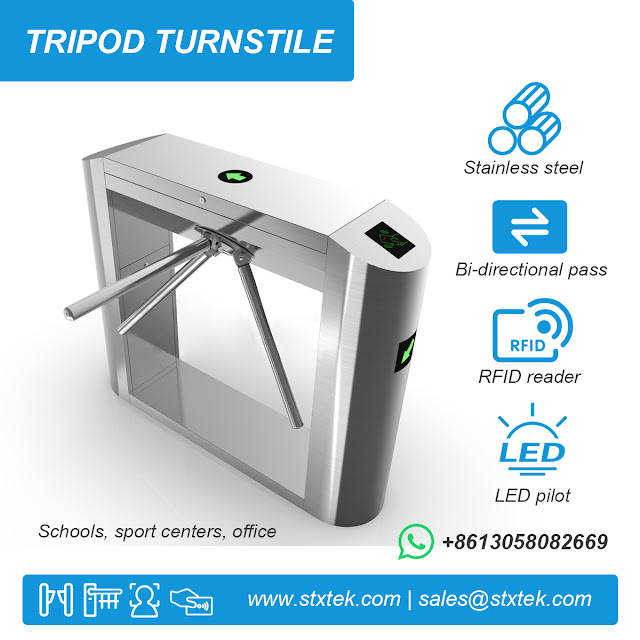What is a tripod turnstile and how it works | STXtek.com
What is a tripod turnstile?
A tripod turnstile is a type of physical access control system that is commonly used in public areas, such as train stations, stadiums, and amusement parks, to restrict access to authorized personnel only. It consists of three rotating arms that are mounted on a central column and arranged in a tripod configuration.
It consists of three rotating arms that are mounted on a central vertical post, forming a tripod shape. The arms are locked in a closed position until a valid credential, such as a ticket or access card, is presented. Once the credential is verified, the arms rotate to allow the person to pass through the turnstile.
Tripod turnstiles are popular because they are relatively compact, easy to install, and can process a high volume of people quickly. They are also cost-effective and provide a reliable method of access control.
When a person approaches the turnstile, they must insert a valid ticket or access card into a reader, and the turnstile will rotate to allow entry or exit. The three arms of the turnstile rotate in a synchronized manner, allowing one person to pass through at a time and preventing unauthorized access.
Tripod turnstiles are often preferred in areas with high pedestrian traffic because they are compact, durable, and can be easily integrated with other security systems such as CCTV cameras and alarm systems. They are also a cost-effective solution for access control and can be customized with a range of features such as biometric readers and RFID technology to enhance security.
How does a tripod turnstile work?
A tripod turnstile is an access control system that is used to restrict or control the flow of people in and out of a specific area. It typically consists of a rotating barrier or gate that can be locked or unlocked to allow or deny entry to individuals. The exact operation of a turnstile may vary depending on the specific type, but the basic principles are as follows:
Approach: A person approaches the turnstile and presents their valid access credential, such as a ticket or access card, to a reader.
Verification: The access control system verifies the credential, and if it is valid, it signals the turnstile to unlock.
Entry/Exit: The person moves through the rotating barrier or gate, typically in a single-file line, and the turnstile rotates to allow them to pass.
Re-locking: After the person passes through the turnstile, it will rotate back to its original position and lock to prevent unauthorized access.
In some cases, turnstiles may also be equipped with additional features such as biometric scanners or CCTV cameras to enhance security and provide additional access control capabilities.
For details or further information on tripod turnstile, or if you have facilities that need turnstile gates, please contact us, or visit our website stxtek.com for more details. We are an experienced turnstile supplier who can offer professional solutions to you.
Contact: info@stxtek.com
WhatsApp: +8613715281530


Comments
Post a Comment